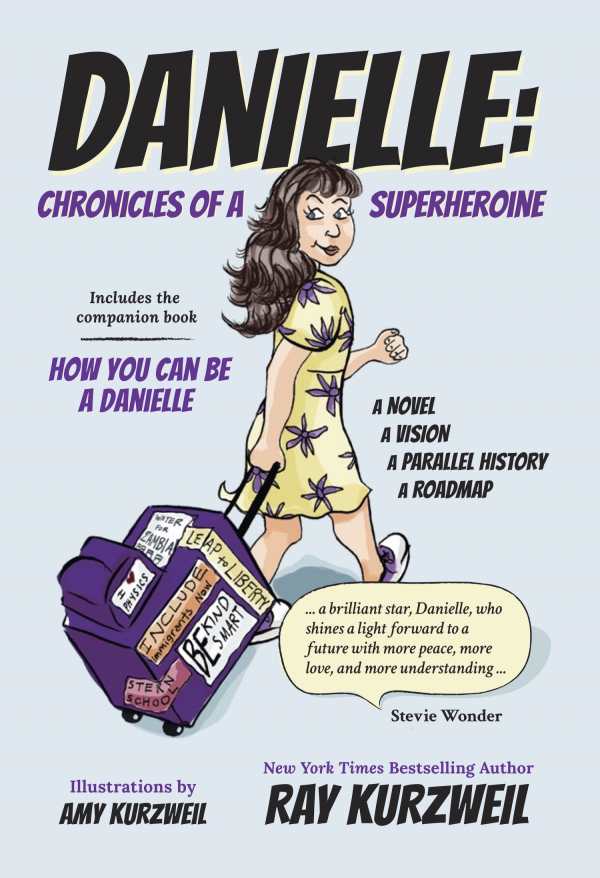Danielle
Chronicles of a Superheroine
Danielle: Chronicles of a Superheroine is a coming-of-age novel that also serves as a call to action.
In American inventor and futurist Ray Kurzweil’s young adult coming-of-age epic Danielle: Chronicles of a Superheroine, capable children are given the freedom to innovate solutions to real world problems.
An American aid worker adopts Claire, a six-year-old Haitian girl who’s left orphaned after an earthquake devastates her island. Her baby sister, Danielle, is born two years later. At first, she seems verbally and physically delayed, but she surprises her family when she’s two with her advanced conversational and abstract thinking skills.
The girls’ father is inspired to start the Stern School (inspired by the nineteenth century, progressive Stern Schule, founded by Kurzweil’s great-grandmother) to foster his children’s remarkable skills, with a nontraditional, interdisciplinary curriculum whose lessons can be applied in the field. Danielle’s ideas evolve into policies that solve global economic, health, and political crises, turning her into an in-demand star.
The book follows a structure akin to the scientific method. Chapters are organized as year-by-year episodes from Danielle’s childhood and adolescence. Those that cover her childhood are short, but chapters become longer in her adolescence when the conceptual problems she deals with become more complex.
Each chapter describes a pressing global concern that Danielle wishes to address. Danielle, as supervised by Claire, devises hypothetical solutions that she tests in the field and modifies her procedures as conflicts arise. She achieves varying degrees of success. This consistent structure, along with short, to-the-point sentences, keep the story’s pace even. Well-placed dialogue between narrative paragraphs keeps the story moving forward with few breaks in its action.
Though it is written in a way that’s accessible to young adults, the book’s abstract concepts in quantum physics, advanced math, and economic theory are sometimes difficult to follow. The most challenging moments are limited to later chapters in the book.
Divided into two distinct parts, the book’s first half reads like standard fiction, while it’s second half acts as a companion to the first, with suggestions for becoming a self-made superhero and facilitating action. Amy Kurzweil’s graphic novel illustrations help to break the story up into digestible chunks.
Claire and Danielle function as personifications of Kurzweil’s economic, political, and scientific leanings, and Claire’s story runs second to the accomplishments of her sister. Her role is supporting: she is Danielle’s caretaker, conscience, and adviser. Danielle herself is compulsive and precocious, and so it’s Claire’s voice that grounds the story. Their Stern School classmates are conduits for explanations of the sisters’ actions.
Danielle and Claire’s alternative view of history can’t help but end on a high note, given the “superhero” nature of Danielle’s gifts and the ebullient optimism that follows each of their respective successes. The final takeaway is that there is no harm in trying something new; doing so might yield insights into and help to solve important issues.
An allegory about encouraging teenage inventiveness, Danielle: Chronicles of a Superheroine is a coming-of-age novel that also serves as a call to action.
Reviewed by
Nancy Powell
Disclosure: This article is not an endorsement, but a review. The publisher of this book provided free copies of the book and paid a small fee to have their book reviewed by a professional reviewer. Foreword Reviews and Clarion Reviews make no guarantee that the publisher will receive a positive review. Foreword Magazine, Inc. is disclosing this in accordance with the Federal Trade Commission’s 16 CFR, Part 255.


